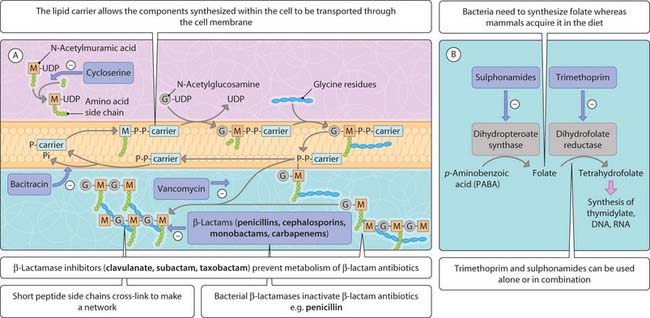43 Chemotherapy
antibiotics targeting cell wall and nucleic acid synthesis
Agents affecting cell wall
The cell membranes of Gram-negative and Gram-positive bacteria are composed of layers of peptidoglycans cross-linked with short amino acid chains; transpeptidase catalyses this cross-linking (Fig. 3.43.1). The β-lactam antibiotics (e.g. penicillins, cephalosporins, monobactams and carbapenems (Fig. 3.43.1C) covalently bind to the active site of this enzyme via the β-lactam ring moiety and reduce its catalytic activity. The resulting disruption of the cell wall results in cell swelling, rupture and bacteriocidal activity through the inability to maintain an osmotic gradient across the membrane. This class of antibiotic is susceptible to enzymatic cleavage by β-lactamases, which are produced by some bacteria and protects them from this type of bacteriocidal activity, thus conferring resistance.
< div class='tao-gold-member'>
Stay updated, free articles. Join our Telegram channel

Full access? Get Clinical Tree










